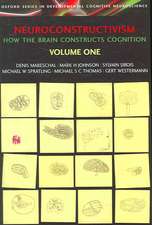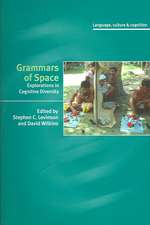Similarity and Analogical Reasoning
Editat de Stella Vosniadou, Andrew Ortonyen Limba Engleză Paperback – 27 iul 1989
Preț: 437.34 lei
Preț vechi: 491.39 lei
-11% Nou
Puncte Express: 656
Preț estimativ în valută:
83.68€ • 87.84$ • 69.46£
83.68€ • 87.84$ • 69.46£
Carte tipărită la comandă
Livrare economică 10-24 aprilie
Preluare comenzi: 021 569.72.76
Specificații
ISBN-13: 9780521389358
ISBN-10: 0521389356
Pagini: 608
Dimensiuni: 156 x 230 x 28 mm
Greutate: 0.82 kg
Ediția:New.
Editura: Cambridge University Press
Colecția Cambridge University Press
Locul publicării:New York, United States
ISBN-10: 0521389356
Pagini: 608
Dimensiuni: 156 x 230 x 28 mm
Greutate: 0.82 kg
Ediția:New.
Editura: Cambridge University Press
Colecția Cambridge University Press
Locul publicării:New York, United States
Cuprins
Preface; Similarity and analogical reasoning: a synthesis Stella Vosniadou and Andrew Ortony; Part I. Similarity and the Structure of Concepts: 1. Similarity, typicality, and categorization Lance J. Rips; 2. Similarity and decision making Edward E. Smith and Daniel N. Osherson; 3. Intraconcept similarity and its implications for interconcept similarity Lawrence W. Barsalou; 4. Two-tiered concept meaning, inferential matching, and conceptual cohesiveness Ryszard S. Michalski; 5. From global similarities to kinds of similarities: the construction of dimensions in development Linda B. Smith; 6. Comments on Part I. Psychological essentialism Douglas Medin and Andrew Ortony; Part II. Analogical Reasoning: 7. The mechanisms of analogical learning Dedre Genter; 8. A computational model of analogical problem solving Keith J. Holyoak and Paul R. Thagard; 9. Use of analogy in production system architecture John R. Anderson and Ross Thompson; 10. Toward a microstructural account of human reasoning David E. Rumelhart; 11. Analogy and the exercise of creativity Philip N. Johnson-Laird; 12. Comments on Part II. Levels of description in information-processing theories of analogy Stephen E. Palmer; 13. Comments on Part II. The role of explanation in analogy; or, the curse of an alluring name Gerald Dejong; Part III. Similarity and Analogy in Development, Learning and Instruction: 14. Analogical learning and transfer: what develops? Ann L. Brown; 15. Analogical reasoning as a mechanism in knowledge acquisition: a developmental perspective Stella Vosniadou; 16. Remindings in learning and instruction Brian H. Ross; 17. New approaches to instruction: because wisdom can't be told John D. Bransford, Jeffery J. Franks, Nancy J. Vye and Robert Sherwood; 18. Multiple analogies for complex concepts: antidotes for analogy-induced misconception in advanced knowledge acquisition Rand J. Spiro, Paul J. Feltovich, Richard L. Coulson and Daniel K. Anderson; 19. Comments on Part III. The activation and acquisition of knowledge William F. Brewer; Afterword Allan Collins and Mark Burstein; Name index; Subject index.

















